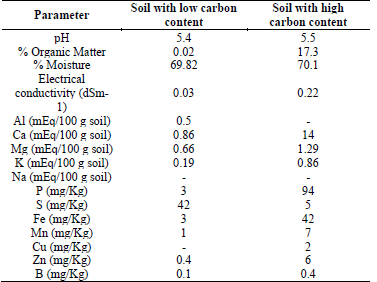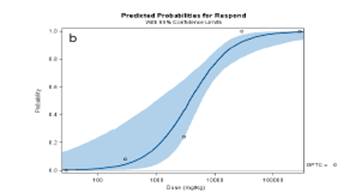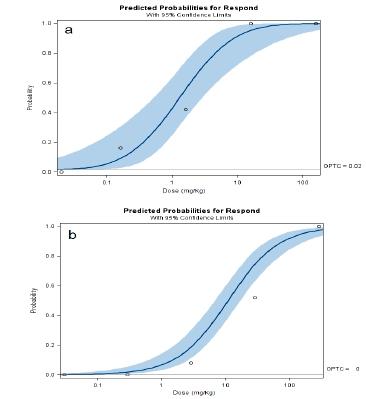1. Introduction
Few studies about treatment of contaminated Fuller’s earth have been conducted due to ignorance of the danger and possible negative environmental impacts. Such ignorance has allowed for the disposal of this material in ordinary landfills without meeting the requisite safety precautions for hazardous wastes.
Fuller’s earth is an inorganic material mainly composed of aluminum silicates. Its high porosity and large surface area (100m2/gram) make it a suitable adsorbent material in various industries, especially in the electric industry where it is used to regenerate the dielectric oil contained in the power transformers [1].
In the regeneration of dielectric oil, Fuller’s earth removes the isoparaffinic, naphthenic and aromatic hydrocarbons generated in the oil as a result of its degradation with air. The high amount of polyaromatic hydrocarbons removed from the oil and now adsorbed in the Fuller’s earth makes this material a hazardous waste. So, Fuller’s earth contaminated with dielectric oil requires proper treatment to reduce its pollution levels and allow for its reuse or safe disposal in a landfill [2].
Studies in which contaminated Fuller’s earth was treated using a solid-liquid extraction technique with a hexane solvent have reported the recovery of both the dielectric oil and Fuller’s earth. [2] got the best results using detergent at a temperature of 343.15K. Although the researchers reduced contamination in the waste, the toxicity levels of the Fuller’s earth after their treatment has not been evaluated.
Toxicity tests have been applied to a wide variety of compounds and contaminants including pesticides, metals and hydrocarbons [3], [4], [5], [6] to evaluate the negative impacts that such compounds may have on ecosystems where they are present [7], [8]. Earthworms are the most important and characteristic macroinvertebrate species inhabiting soil, representing 60 to 80% of the total animal biomass [9]. Their continuous exposure to contaminants in the surrounding habitat and their role in the ecosystem makes earthworms a suitable test organism for performing toxicity tests [10]. These organisms have been used in different toxicity tests [11]. Protocols established by the OECD [12] and ASTM [13] constitute the framework for this type of testing and the use of worms as test organisms.
This research aims to assess the toxicity of Fuller’s earth contaminated with dielectric oil, decontaminated Fuller’s earth and its leachate in soils with different carbon content. The toxicity of the decontaminated Fuller’s earth will determine the effects of its disposal in a conventional landfill, and the possibility of its safe reuse as an adsorbent material. Two different scenarios are proposed, one which corresponds to a low carbon content soil characteristic to landfills and the other to a soil with high carbon content. The marked difference between these two types of soil will show the influence of soil type on the test results and establish how convenient is to use an artificial soil to carry out the test. The most significant contribution of this research is to determine the implications of this type of waste in real soil and the impacts on soil ecosystems.
2. Materials and Methods
The test organisms were Eisenia foetida earthworms. This species was initially acquired from a local producer in Medellin, Colombia and then cultured in the laboratory. The earthworms evaluated in the different trials were all adults with well-developed clitellum in order to ensure equal conditions of exposure for all test organisms. Soils used in the test correspond to native soils from the town Marinilla in Colombia, which are characterized by low and high carbon contents. The physicochemical characterization of the soils used in the tests is presented in Table 1. Toxicity tests were performed based on the standards of the OECD [12], ASTM [13] and USEPA [14].
In this test, the earthworms were exposed to different concentrations of dielectric to identify the material’s toxic potential. Oil concentrations were prepared based on the amount of oil previously extracted from contaminated Fuller’s earth. For each concentration, ten (10) solutions were prepared, following a geometric series. One (1) mL of each solution was then homogeneously distributed of on the surface of a filter paper and arranged on a petri dish. After drying the filter paper at room temperature, one (1) mL of water was added and a previously prepared worm was placed in each dish. Finally, each petri dish was covered with a perforated plastic film. The test organisms were then exposed to the solutions in a dark room for a period of 48 hours, at a temperature between 296.15 and 298.15 K. After 48 hours, the state of earthworms, their behavior and response to mechanical stimuli were evaluated. Replicas for each concentration tested were prepared using this same methodology, in accordance with the guidelines, protocols and standards for toxicity testing. The control used in the test was prepared in the same manner as the test samples. One control contained water and the other only contained the solvent used in the extraction of the dielectric oil. In this way, the experiment design controlled for the possible toxic effect of these solvents on the test organisms.
2.1. Preparation of the test organisms
The test organisms were prepared similarly in all tests. The worms after being harvested, were washed and deposited on a wet filter paper. The worms were kept in the container with the moist filter paper for a period of three hours in order to remove all content from the intestines of these organisms and ensure equal conditions. The worms were then washed again and dried. With preparation of the worms completed, testing could begin.
2.2. Testing with Filter Paper
In this test, the earthworms were exposed to different concentrations of dielectric to identify the material’s toxic potential. Oil concentrations were prepared based on the amount of oil previously extracted from contaminated Fuller’s earth. For each concentration, ten (10) solutions were prepared, following a geometric series. One (1) mL of each solution was then homogeneously distributed of on the surface of a filter paper and arranged on a petri dish. After drying the filter paper at room temperature, one (1) mL of water was added and a previously prepared worm was placed in each dish. Finally, each petri dish was covered with a perforated plastic film. The test organisms were then exposed to the solutions in a dark room for a period of 48 hours, at a temperature between 296.15 and 298.15 K. After 48 hours, the state of earthworms, their behavior and response to mechanical stimuli were evaluated. Replicas for each concentration tested were prepared using this same methodology, in accordance with the guidelines, protocols and standards for toxicity testing. The control used in the test was prepared in the same manner as the test samples. One control contained water and the other only contained the solvent used in the extraction of the dielectric oil. In this way, the experiment design controlled for the possible toxic effect of these solvents on the test organisms.
2.3. Toxicity test with real soils
Different authors have conducted toxicity tests with Eisenia foetida and Andrei earthworms. However, these works are based on tests with artificial soil made from a mixture of moss, clay and sand in most cases. In contrast, in this study, the toxicity test has been conducted on low carbon soil that simulates the behavior of contaminated Fuller’s earth disposed in a landfill while the test with high carbon content soil simulates the behavior of this material in a soil. Thus, toxicity tests are developed in both scenarios evaluating contaminated Fuller’s earth, decontaminated Fuller’s earth and its extract.
2.3.1. Toxicity test with contaminated soil
In this test, the toxicity of Fuller’s earth contaminated with dielectric oil is evaluated by exposing the test organisms to this material. The median lethal concentration (LC50) is defined as the point when a mortality rate of 50% is reached in the tested samples. The LC50 was calculated using a Probit analysis, carried out on SAS 9.2 statistical software licensed 0070014185 of the Universidad Nacional de Colombia. Thus, the statistical analysis of the data was performed and the LC50 of contaminated Fuller’s earth in the two types of soil tested was determined. A preliminary test was performed using different soil-contaminated Fuller’s earth ratios for the two soil types evaluated. This test was used to define an initial lethal concentration at which the test organisms present mortality. Based on the lethal concentration found in the initial test and following a geometric series, the definitive LC50 of Fuller’s earth contaminated with dielectric oil was determined for both soil types. Concentrations evaluated in this test were prepared by adjusting the amount of contaminated Fuller’s earth with respect to the amount of soil, considering that the oil content in the contaminated Fuller’s earth is equal to 0.2188 g oil/g of contaminated Fuller earth. Eisenia foetida consume an estimated 16 mg of soil per individual per day [13].
Therefore, the smallest measurement of soil used in the tests was 11,200 mg, which corresponds to the minimum amount of soil required for the test organisms to survive a period of 14 days without starving. The controls of this test correspond to soil samples prepared with the highest ratio of contaminated Fuller’s earth-soil. So, one of the controls contained uncontaminated Fuller’s earth-soil and the other only the type of soil used in the test. Thus, any inherent toxic effect of the Fuller’s earth and soil used in the toxicity test was controlled. The blanks were prepared in this way because if the test organisms exhibited no adverse response to the maximum evaluated conditions, it is expected that no change occurs in the intermediate and lower conditions.
2.3.2. Toxicity test with soil contaminated with Fuller’s earth leachate
This test was used to simulate the toxic effects of contaminated Fuller’s earth leachate on the two different soils types. Based on the lethal concentrations defined in the pretest, the concentrations evaluated in this test were determined. The corresponding solutions were prepared from the dielectric oil extracted from contaminated Fuller’s earth. After preparing the respective solutions, each of these was uniformly distributed on the soil samples. The prepared soil samples were dried for a period of 24 hours to remove the solvent added to the solution. The controls for this test correspond to soil samples prepared similarly to the test samples. One control was sprayed only with water, and the other with the solvent used in the extraction of the dielectric oil.
2.3.3. Toxicity test with decontaminated Fuller’s earth
This test established if decontaminated Fuller’s earth has some degree of toxicity on test organisms. Samples were prepared with the same Fuller’s earth to soil ratios used in the previous tests; only this time, the contaminated Fuller’s earth was replaced with decontaminated Fuller’s earth. The highest ratio was replicated because it was assumed that if a larger amount of decontaminated Fuller’s earth in the ratio did not adversely affect the test organisms, smaller amounts would likewise cause no adverse effects. As in the previous tests, the minimum amount of soil used in this test was set at 11,200 mg. The controls of this test were prepared similarly to other samples. One control contained decontaminated Fuller’s earth-soil, and the other contained only the soil type used in the test.
2.4 Test development
Once the soil was prepared for evaluation, it was divided into five glass Petri dishes, depositing a sample of approximately 200 g of in each. The previously prepared and weighed worms were then placed in the dishes. The containers were covered with a perforated plastic film and transferred to a room with a temperature between 296.15 and 298.15 K and continuous light of 400 lux.
2.5. Test assessment
The earthworms were reviewed at 7 and 14 days, counting them and assessing their physical state. On the seventh day, the earthworms were counted and weighed. Their behavior and responses to mechanical stimuli were also evaluated. The presence of earthworms at the surface of the soil was considered a negative response to the presence of contaminants [13].
After the review, each soil sample was returned to its respective container with its corresponding worms to continue the test under the same conditions for another seven days. Fourteen (14) days after the tests were initiated; the worms were again counted and weighed. Behavioral alterations or morphological changes were observed. Such alterations and changes included curling into balls, discoloration, stiffness, swelling, fragmentation, tissue loss, or moving up to the soil surface. The number of worms with altered behavior and/or morphological changes was recorded with accompanying detail. Deaths were also counted and reported. A worm was considered dead when it presented no response to mechanical stimulus. If one of the 10 worms initially deposited into the container was not found during review, it was considered dead and completely decomposed. The worms that lost a high percentage of their body weight but still moved were considered alive. Alterations on the body of earthworms were considered sub-lethal effects [15].
2.6. Test validation
For a test to be valid, the mortality rate at the end of the test should not exceed 10%. Parallel to each test, a positive control was conducted with the reference compound 2-Chloroacetamide. The control was performed in order to test the sensitivity of the test organisms in the presence of a reference compound and ensure that the conditions under which the tests were carried out were adequate [15], [16].
3. Results and Discussion
3.1. Testing with filter paper
Three (3) different solvents were used to prepare the standard solution of the contaminated Fuller’s earth leachate. The solvents were assessed to see which solubilized better the dielectric oil extracted from the material and also had no toxic effects on the test organisms. Surfactants Biosoft and Tween 80 and a 10% ethanol solution were used as solvents. In preliminary testing, the surfactant Biosoft was found to be toxic to the test organisms. Even in the controls for this solvent, the worms died. In contrast, the surfactant Tween 80 and the 10% ethanol solution resulted in no mortality for the earthworms. Following tests were conducted using a 10% ethanol solution because this solvent did not interfere with the progress of the test. Moreover, it is used for the extraction of dielectric oil from contaminated Fuller’s earth.
Concentrations used in the filter paper testing correspond to those suggested by the OECD (1994): 1, 0.1; 0.01; 0.001 and 0.0001 mg/cm2 [13]. These concentrations were obtained by adding the standard dielectric oil solution to the area covered by the filter paper (65 cm2) in each petri dish in accordance to a geometrical series from 68 to 0.0068 mg. The test results show that dielectric oil is toxic to the test organisms at a concentration of 1 mg/cm2. At this concentration, all the worms died, which did not happen at the other concentrations tested or during the control tests with ethanol and water where the worms survived the exposure period without changing their behavior.
3.2. Toxicity test with contaminated soil
A preliminary test was performed to determine the lethal concentration of dielectric oil on the test organisms in soil samples with different carbon contents. This test consisted of adjusting both soil types with 0.5 to 100% of contaminated Fuller’s earth. High carbon content soil proved lethal to the test organisms when it contained 1% contaminated Fuller’s earth; this percentage is equivalent to 2868.40 mg oil/kg of the soil dry weight. In the case of soil with low carbon content, the lethal concentration was reached when the sample contained 0.5% contaminated Fuller’s earth; this value corresponds to 1589.56 mg oil/kg of the soil dry weight. The median lethal concentration (LC50) of contaminated Fuller’s earth was determined following a geometric series based on the lethal concentrations of dielectric oil in both soils. Thus, the concentrations of Fuller’s earth used in a high carbon content soil ranged between 286839.85 and 28.68 mg oil/Kg of soil dry weight while in low carbon content soil, the concentrations were between 158955.83 and 15.90 mg oil/kg of soil dry weight.
After the test, the state of earthworms in each of the samples was examined. For a soil with high carbon content, a 100% mortality rate was reached at the two highest concentrations evaluated (286839.85 and 28683.98 mg oil/Kg of soil dry weight). In the soil with low carbon content, 100% mortality of the test organisms occurred at concentrations of 158955.83, 15895.58 and 1589.56 mg oil/kg of soil dry weight. The reported mortality for each of the concentrations tested is presented in Table 2 and Table 3.
Table 2 Percentage mortality for each concentration tested. Authors' elaboration.
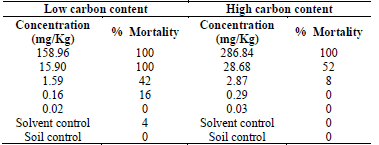
Source: The Authors.
Table 3 Median lethal concentration (LC50) and confidence limits for toxicity test.
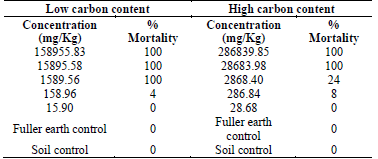
Source: The Authors.
After establishing the mortality rate for each concentration, the median lethal concentration (LC50) of contaminated Fuller’s earth for the two soil types was determined using Probit analysis. The LC50 for a high carbon content soil was found to be to 3659.00 mg oil/kg of soil dry weight, while for a low carbon content soil the LC50 corresponds to 281.80 mg oil/kg of soil dry weight. The difference between these values shows the significant influence of the type of soil used. According to these results, Fuller’s earth contaminated with dielectric oil is much more toxic and harmful to the ecosystem and environment in a soil with low carbon content than in a soil with high carbon content. The concentration of dielectric oil required to cause 50% mortality in both kinds of soil is 13 times lower in the soil with low carbon content. Fig. 1 shows the dose response relation for both soils tested.
3.3. Toxicity test for soil contaminated with Fuller’s earth leachate
This test aimed to simulate the toxic effect that contaminated Fuller’s earth leachate would have on soils with different carbon contents. The concentrations chosen for the evaluation were established based the lethal concentration defined for both soil types in the pretest. Using the dielectric oil leachate obtained from the contaminated Fuller’s earth, five solutions were prepared for each soil type. In the soil with high carbon content, concentrations of 286.8, 28.7, 2.9, 0.3 and 0.03 g oil/L were evaluated. Concentrations used while testing low carbon content soil corresponded to 159.0, 15.9, 1.6, 0.2 and 0.02 g oil/L. The test results obtained for each concentration were analyzed. It was found that a 100% mortality rate occurred at concentration of 286.8 g oil/L in high carbon content soil and at concentrations of 159.0 and 15.9 g oil/L in the low carbon content soil. The reported mortality percentages for each concentration are presented in Table 4 and Table 5
Table 4 Percentage mortality for each of the concentrations evaluated at the test.

Source: The Authors.
Table 5 Median lethal concentration (LC50) and confidence intervals for toxicity test.

Source: The Authors.
The median lethal concentration (LC50) of contaminated Fuller’s earth leachate in the two soil types evaluated was determined using Probit analysis. The LC50 of the leachate in a high carbon content soil corresponded to 10.83 mg oil/kg of soil dry weight while in a low carbon content soil; the LC50 corresponds to 1.33 mg oil/kg of soil dry weight. These results reflect the impact of soil type on the toxicity of the dielectric oil and show that the dielectric oil leachate is 8 times more lethal in a soil with low carbon content than in a soil with high carbon content. This conclusion is similar to that from the test with contaminated soil, where the dielectric oil was also more toxic to test organisms in a soil with low carbon content. Fig. 2 shows the dose response relation for both soils tested.
3.4. Toxicity test with decontaminated Fuller’s earth
This found that decontaminated Fuller’s earth is not toxic to the test organisms. None of the test organisms died or showed any physical or behavioral alterations as a result of exposure. Similar results were obtained in both types of soil evaluated. Therefore, it is possible to dispose this material safely in a landfill or reuse it as adsorbent material once it has been decontaminated. The characteristics of this material make it an attractive adsorbent material for industries like textile production, as well as electric industry, because decontaminated Fuller’s earth could be used for treating water contaminated with dyes produced in dyeing processes.
3.5. Comparison of results
The results obtained in the different tests converge at the same point. This study demonstrated the influence of the carbon content of the soil on the toxicity of dielectric oil. Direct disposal of contaminated Fuller’s earth in soils with different carbon contents is less lethal than their direct leaching. The comparative safety of direct disposal is due to the fact that the soil adsorbs the contaminant and retains it in a such away as to reduce the contaminant bioavailability and thus, its toxicity. The same does not happen with the leachate, which is fully available for the test organisms.
This finding confirms that the hydrophobic organic compounds have an organic-organic adsorption. Therefore, these compounds prefer to be in the organic matrix of the soil than in the solution which decreased their mobility. The lower adsorption of the contaminant in the soil of low carbon content makes the dielectric oil more bioavailable in this type of soil, resulting in increased toxicity and mortality of the test organisms. This was confirmed by the tests where the low carbon content soil reached a 50% mortality of the test organisms at a lesser concentration of dielectric oil. The direct disposal of contaminated Fuller’s earth or its leaching in this soil type, characteristic of a landfill, represents a potential threat to ecosystems.
The final disposal of such waste should be conducted in duly authorized places, under the strictest safety standards as to minimize risks of toxicity near aquifers and groundwater sites. This conclusion is consistent with those reported by Dorn et al. [3] and Ellis et al. [17] who evaluated the toxicity of various types of hydrocarbons and Carbendazim fungicide on two soils with different carbon contents. As in this study, Dorn et al. [3] determined that higher toxicity is associated with lower carbon contents of the soil. Meanwhile, Ellis et al. [17] found that toxicity, as well as being influenced by the organic matter in the soil, is affected by pH. Ellis et al. [17] found that a higher content of organic matter and a low pH decrease toxicity of Carbendazim on test organisms.
Organic carbon has a three-dimensional structure, presents high porosity, high cationic exchange capacity and has many functional groups available to react and sorb the pollutants. In fact, the high content of organic carbon in a soil allows greater retention of hydrophobic pollutants producing an organic-organic sorption. The opposite occurs in soils with a low content of organic carbon which indicates a low retention of the dielectric oil and allows more mobility of the pollutant in the soil [18].
4. Conclusions
The tests conducted in this study demonstrate the significant influence of soil type and its properties in retaining and reducing pollutant bioavailability. This type of testing, therefore, allows for the more accurate and detailed evaluation of test organisms’ behavior in response to a contaminant as in real conditions. Although it is possible to implement this type of test with artificial soil, the results do not accurately represent the conditions under which the test organisms behave in real soil. The toxicity tests were conducted determined that decontaminated Fuller’s earth represents no environmental risk and is safe for disposal in a landfill or reuse as adsorbent in the electrical, textile and paper industries, among others. Follow-up research should investigate the adsorptive capacity of the material for treating water contaminated with dyes from textile production. An appropriate methodology for the toxicological evaluation of the contaminant in the solid and liquid matrix should be established. The results obtained in this study are important because they establish the framework for future analyzes of toxicity.
This study was conducted with the support of the Vicedecanatura de Investigación y Extensión of the Facultad de Minas of the Universidad Nacional de Colombia Sede Medellín project code #20701008760. Finally, we thank the Hydraulics Laboratory of the Facultad de Minas of the Universidad Nacional de Colombia Sede Medellín for the use of their facilities in the development of this project.













